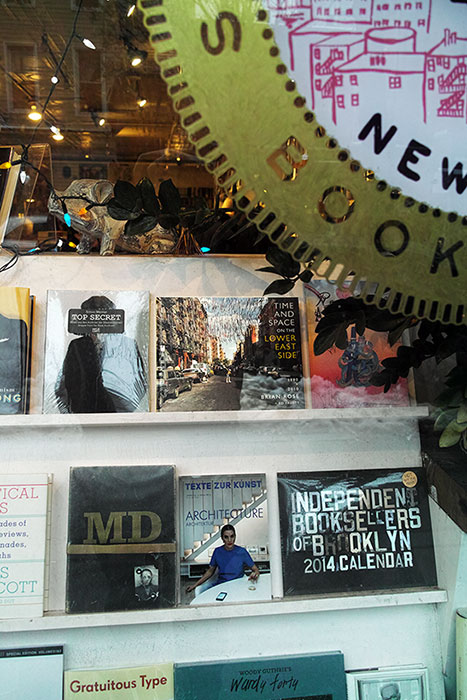
Time and Space in the Tenement Museum shop window — © Brian Rose
Prior to my recent book — Time and Space on the Lower East Side — I worked with established publishers in the Netherlands and here in New York. The results were mixed, both in terms of quality and distribution. I can’t complain too much in that I did not have to bring money to the table for any of them. But I never made a dime on those books either. The Lost Border, the Landscape of the Iron Curtain was available in a few bookstores, but most of the sales were on Amazon. It’s still available on Amazon, but I have acquired a number of copies and plan to offer signed books on my website sometime soon.
By the time I got around to doing Time and Space, the publishing landscape had changed, and I knew that I would probably have to pay for the book myself — either that, or send out dummies and wait months and months for someone to respond, if ever. So, I decided to take control, put up the money (partially raised on Kickstarter), and distribute the book myself. I ended up working with Bill Diodato, a photographer with a publishing sideline called Golden Section Publishers.
I realized from the start, that the economics of my book — in an edition of 1,000 — would not make it possible to sell via Amazon, which demands a much larger cut of the retail price than any brick and mortar store. I would lose money on every sale. So, I began seriously cultivating relationships with independent book stores. It helped that I could tell them that Amazon would not be undercutting them, and it helped that I had a book with a local New York theme. Nevertheless, I expected my online sales to equal or approach store sales.
I’ve done pretty well online, but the reality is that 75% of my sales have been through bookstores. It depends, of course, on the kind of book you have. There are photo books that sell primarily to collectors, and you’d rarely find them in local shops. Dashwood Books on Bond Street in Noho caters particularly to the collecting crowd. As far as I know, it’s the only shop in New York that exclusively sells photo books. The other stores sell to the general public, albeit a rather sophisticated NYC public. They curate their offering carefully, and simply do not have the space to carry everything.
Time and Space and my upcoming book Metamorphosis, Meatpacking District 1985 + 2013 were designed to stand out on display tables, which is where you have to be in stores. Once your book is on the shelf with only the spine showing, you’re dead. My assistant and I have spent days visiting the stores that carried Time and Space making sure that the book was prominently displayed. Ultimately, you want a stack of books — it’s psychologically more enticing — and you have to make sure the stores reorder before they run out. Otherwise, weeks can go by before they get around to calling for more. No matter how good your distribution, nothing replaces these in person visits.
We all know that bookstores are under severe pressure with ebooks replacing hard copy, and amazon.com undermining prices. Moreover, independent stores are not always as savvy as they could be. But unless you are famous, or have a big promotional budget, the primary way to reach the public is still through these stores. You know who they are in Manhattan: The Strand, St. Mark’s, McNally Jackson, Rizzoli, and the various museum shops. And ironically, Time and Space has done really well at John Varvatos, the clothing shop that occupies the former CBGB on the Bowery. Photo books can be fashion accessories.
Despite the digitization of photography — or perhaps because of it — we are in a golden age of photography books. There are now numerous websites, blogs, and Facebook groups that review or sell photo books, and all of that virtual infrastructure helps build community and encourage sales. But without local bookstores, where one can browse, discover, pick up and feel, fewer photo books will reach the public. Simple as that.